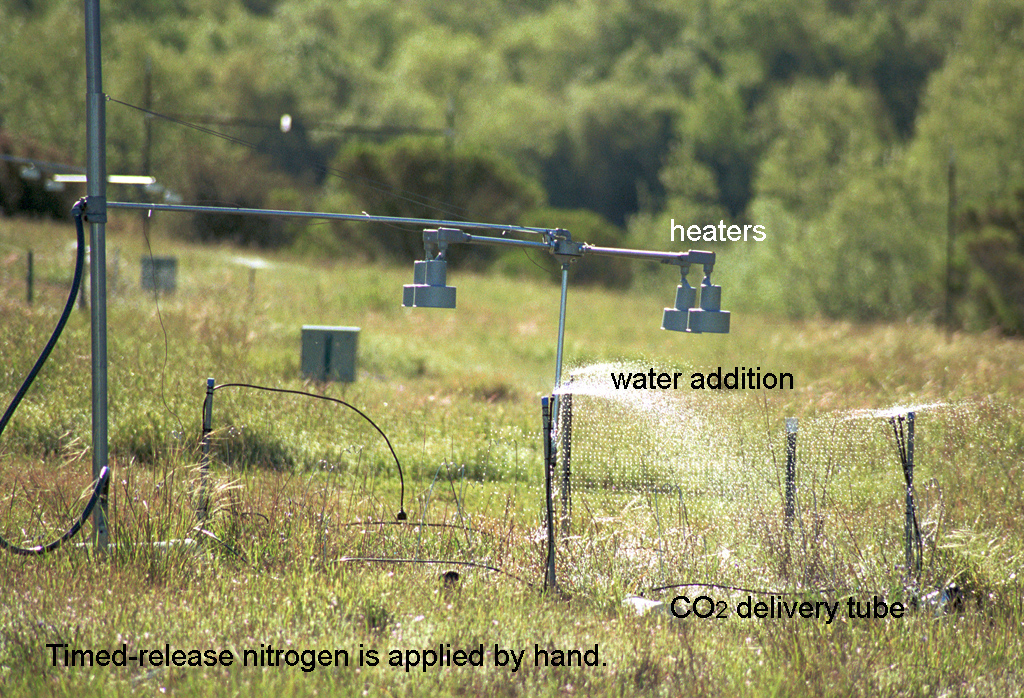Jasper Ridge Global Change Experiment

Summary
The Jasper Ridge Global Change Experiment (JRGCE) studies the response of California grassland to 4 environmental factors changing globally--warming, nitrogen deposition, elevated carbon dioxide, and increased precipitation--applied in a full-factorial design. The experiment covers 3 ha of grassland and has operated since 1998, with treatments beginning in the fall of 1998. The four global change treatments, and all possible combinations, are applied in a split-plot, randomized block design with 8 replicates, a total of 128 experimental units. A wildfire in the summer of 2003 burned two of the replicates in each treatment, dropping the level of replication to six in the main experiment, but adding fire as a replicated treatment. There are also 8 replicates of a true control, with no treatment infrastructure. This comprehensive study involves a third of all JRBP researchers.
Over the first 5 years of the experiment, supplemental nitrate deposition produced the largest increase in annual production, while other treatments had small or counteracting effects on root and shoot biomass. In some years, elevated CO2 suppressed the growth enhancements produced by other treatments. Post-burn studies and other findings suggest changes in phosphorus cycling may underlie some of the effects of other treatments. For example, in 2004, elevated CO2 stimulated production in burned plots, but not in unburned.
Other important findings are that realistic global changes can lead to substantial decreases in species diversity; that plants can reverse the tendency of warming to dry the soil; that changes in species composition under some treatments may be due to herbivory by slugs and snails; and that global changes may narrow the flowering period of a grassland community, increasing plant competition.
Project Location (Sector 30)
 |  |  |  |  |  |  |  |  |
 |  |  |  |  |  |  |  |  |
 |  |  |  |  |  |  |  |  |
 |  |  |  |  |  |  |  |  |
 |  |  |  |  |  |  |  |  |
 |  |  |  |  |  |  |  |  |




